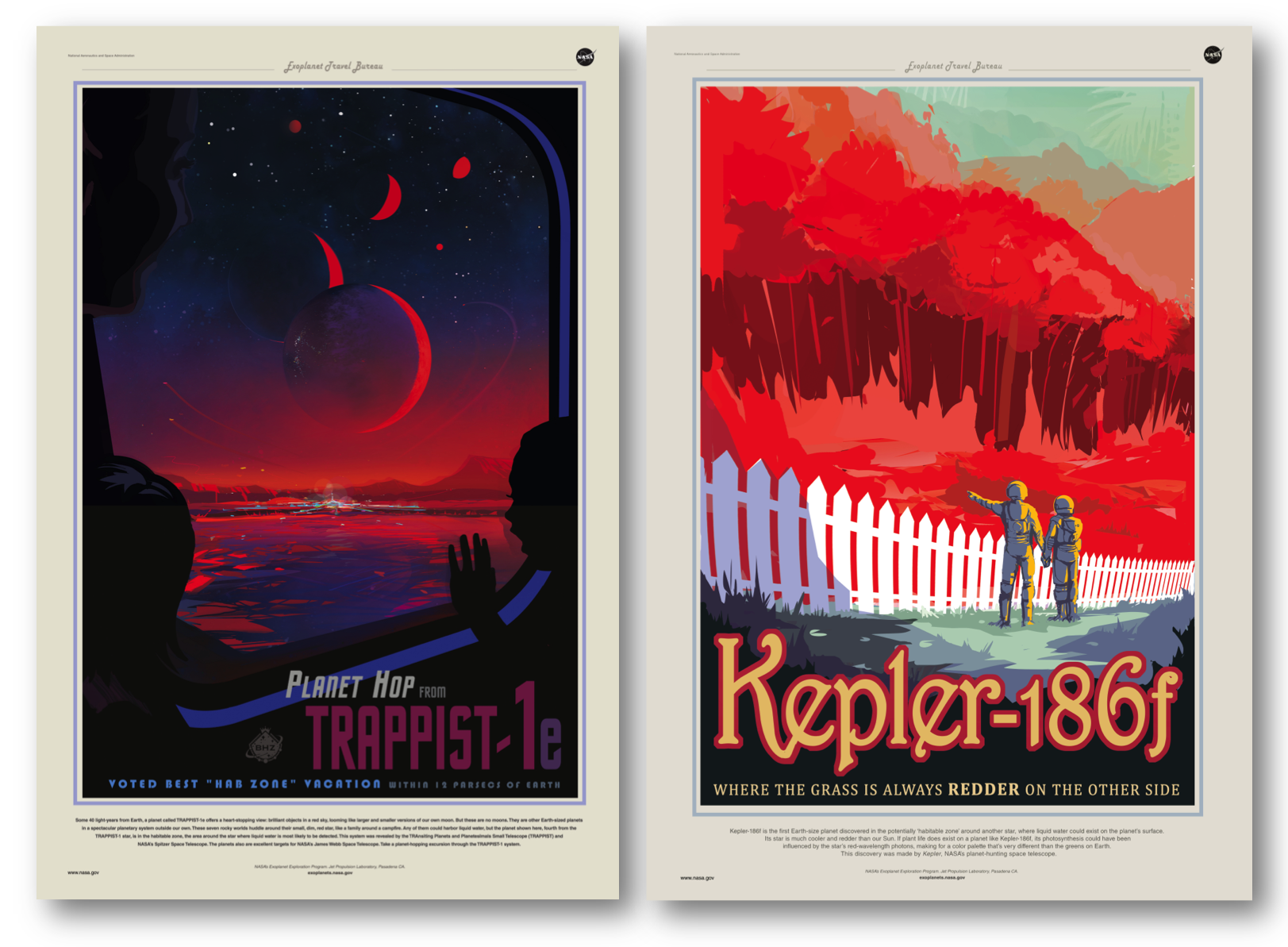11 2.5 Are There Other Earths?
As of July 2021, 4,777 exoplanets—extrasolar planets, or planets outside of our solar system—have been confirmed. An additional 4,640 potential exoplanets have been detected and await confirmation. The majority of exoplanets have been detected using the transit technique, which involves looking for periodic fluctuations in light from a star from planets transiting in front of the star, causing it to appear dimmer (Figure 2.15).

If “other Earths” are defined as planets where we could walk out of a spaceship with no equipment other than a picnic basket, and enjoy a pleasant afternoon on a grassy slope near a stream, then it remains to be seen whether any of these planets fit the description (although NASA’s Exoplanet Travel Bureau would like to make some suggestions for you to explore and find out for yourself; Figure 2.16.)

On the other hand, if “other Earths” refers to rocky worlds approximately Earth’s size, and orbiting within their star’s habitable zone (the zone in which liquid water, and potentially life, can exist), then as of the October 2020 update of the Habitable Exoplanets Catalog, it’s possible that we have found 60 such worlds.
Part of the uncertainty about the 60 possible Earth-like worlds is related to their composition. Only five have been confirmed to be rocky, but it’s tempting to conclude that the others are because they’re similar in size to Earth. Remember the rules of the accretion game: you can only begin to collect gas once you’re a certain size, and how much matter you collect depends on how far away from the sun you are. Given how large our gas giant and ice giant planets are compared to Earth, and how far away they are from the sun, we would expect that a planet similar in size to Earth, and a similar distance from its star, should be rocky.
But it isn’t quite as simple as that. We’re finding that the rules to the accretion game can result in planetary systems very different from our own. In the planetary systems we’ve observed, it’s common to have planets larger than Earth orbiting closer to their star than Mercury does to the sun. Planets as large as Jupiter are rare, and where large planets do exist, they’re much closer to their star than Jupiter is to the sun. To summarize, we need to be cautious about drawing conclusions from our own solar system, just in case we’re basing those conclusions on something truly unusual.
On the other hand, the seemingly unique features of our solar system would make planetary systems like ours difficult to spot. Using the transit method, small planets are harder to detect because they block less of a star’s light than larger planets. Larger planets farther from a star—like our gas giant planets—are difficult to spot because they don’t go past the star as frequently. If someone were observing our solar system, they might have to watch for up to 12 years to see Jupiter pass in front of the sun. For Saturn, they might have to watch for 30 years.
Key Ideas About the Hunt for Other Planets
If Habitable Zone Planets Are Terrestrial, Could We Live There?
The operational definition of “other Earths” involving a terrestrial composition, a size constraint of one to two times that of Earth, and location within a star’s habitable zone, does not preclude worlds incapable of supporting life as we know it. By those criteria, Venus is an “other Earth,” albeit right on the edge of the habitable zone for our sun. Venus is much too hot for us, with a constant surface temperature of 465°C (lead melts at 327°C). Its atmosphere is almost entirely carbon dioxide, and the atmospheric pressure at its surface is 92 times higher than on Earth. Any liquid water on its surface boiled off long ago. Yet the characteristics that make Venus a terrible picnic destination aren’t entirely things we could predict from its distance from the sun. They depend in part on the geochemical evolution of Venus, and at one time Venus might have been a lot more like a youthful Earth. These are the kinds of things we won’t know about until we can look carefully at the atmospheres and compositions of habitable-zone exoplanets.
Using Our Solar System to Understand the Kepler-102 Exoplanet System

